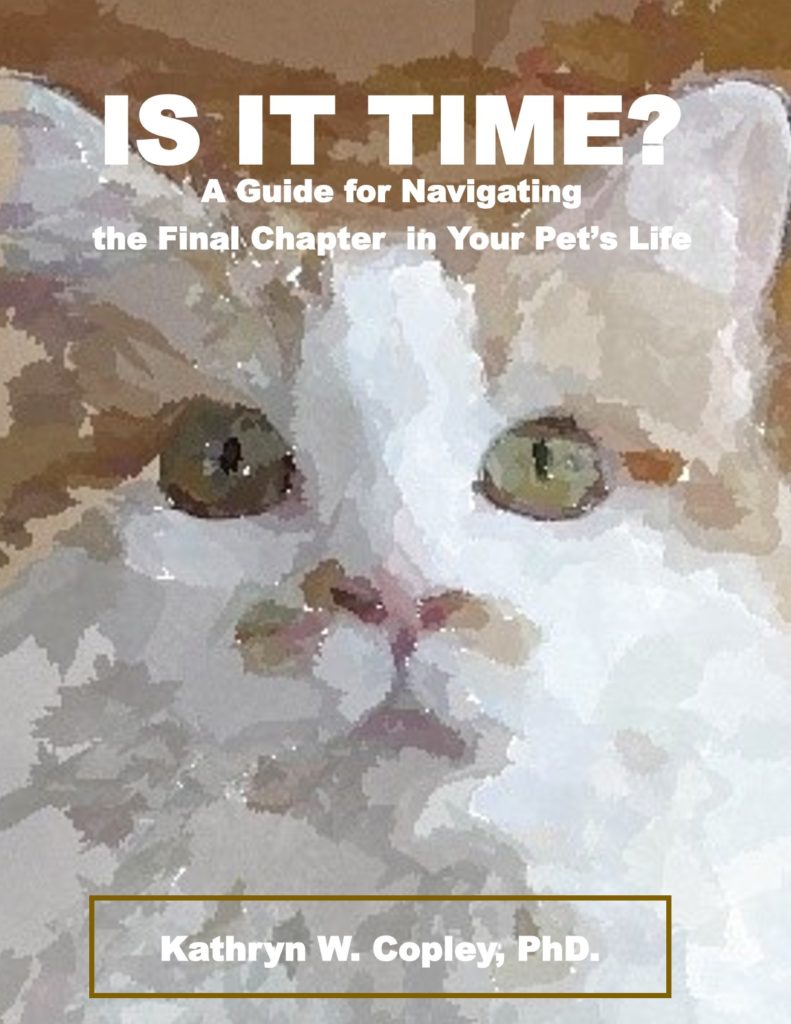According to research conducted by the ASPCA, and published in the Open Journal of Animal Sciences, more than one million households in the U.S. rehome their pets each year.

Never abandon your animal. No tying it to the door handle of the vet’s office or to the gate at the shelter. No releasing it down a deserted country road.
Freud and Bud-Bud were rehomed the wrong way — left behind when the family moved.
Some of the tips at Rehoming a Dog or Cat | Best Friends Animal Society are specifically for finding a home for a stray you have found (like checking for a microchip and notifying local shelters and animal rescue organizations), but most apply to rehoming your pet as well.

What does limited-admission / no-kill mean?
Both a limited-admission / no-kill and an open-admission shelter have a finite amount of space. An open-admission shelter takes every animal brought to it and — if it is full — to make room for animals turned in “today,” it euthanizes animals turned in previously. A limited-admission / no-kill shelter accepts only the number of animals it has room for and does not euthanize to make more room. This means appointments are often necessary and waiting lists are common.
As Best Friends Animal Society defines no-kill (Defining No Kill | Best Friends Animal Society), a no-kill shelter saves every dog and cat in a shelter who can be saved, “healing the animals who can be healed, treating behaviors that can be treated, and prioritizing safety and a high quality of life for both pets and people in our communities…. When animal shelters and the communities they serve value those objectives, euthanasia is used only as a last resort, when an animal is suffering from an irreparable medical or behavioral condition. No-kill means that an end-of-life decision for a pet is an act of mercy rather than one done for convenience or lack of space.”

REHOMING YOUR "PRE-LOVED" PET
There are situations in which your home ceases to be the right home for your pet. A move, a new baby, taking on caregiver responsibilities, a new job that requires travel, a pet that requires medical care you can’t afford – any of these can require you to rethink pet ownership.
The considerations are multiplied when your pet is elderly or has medical conditions or physical limitations. There may have been a time when euthanasia was a solution to problems like these, but no more. A reputable veterinarian won’t put down an adoptable pet.
Are you sure you actually can’t keep it?
Is there a way around the problem, a solution that would make it possible for you to keep your pet?
- Your female dog or cat keeps getting pregnant? Many humane societies and municipal animal shelters can put you in touch with a low-cost spay/neuter clinic.
- You can no longer afford its food? Check your local animal shelter and food pantry for pet-food programs.
- Someone in your household is allergic? Would an air purifier relieve the allergic reaction? For more information: Nothing to sneeze at and How to live with allergies and pets | The Humane Society of the United States,
- A behavioral problem? It isn’t fair to the potential new owner OR to your pet to pass on behavioral issues without revealing them. Aggression? Eliminating in the house? Could a trainer or animal behaviorist help? Lots of websites will offer advice, like the issues addressed on https://rehome.adoptapet.com/help-keep-pet. Some problems that look behavioral could actually be medical (urinating outside the litterbox could mean a urinary tract infection), so talk to your veterinarian.
- The new apartment doesn’t allow pets? Can you find an apartment that will allow them? Apartment-finding websites often include pet-friendly listings. The Humane Society of the United States provides this guide: Information for renters with pets | The Humane Society of the United States.
- New job means you have less time for your pet? Is pet day-care or a dog walker available?
- A temporary situation like a job loss or your own sickness or injury means you can’t currently afford your pet? Can someone take him temporarily?
- You’re having a baby? Googling will help you find suggestions for safely having both a pet and a baby, like Cats and babies | Health | Baby (essentialbaby.com.au) and Introducing your pets to your baby – PetRescue
- Deploying? Home | Dogs On Deployments
- Your pet requires expensive treatment? Vet Bill Help: 20+ Organizations That Help You Pay Veterinary Care Bills – MoneyPantry, Is It Time? — Financial assistance with vet bills
- More tips: Need to Rehome Your Cat? Advice and Alternatives – Cat Chat
You are your pet’s best advocate
Do your best to find a new home yourself. A shelter may seem to have more adoption resources in place than you do, but no one knows your pet, its quirks, and its needs better than you do. You can focus your full resources on its successful placement, but a shelter’s efforts are of necessity spread among all its animals. Plus, a shelter stay can be stressful for your pet.
Rehoming takes time, so be patient and start as early as you are aware of the potential need.
To find a loving home for a pet you can no longer keep…
Increase your pet’s adoptability by having it spayed or neutered, having it tested / treated (as necessary) for such things as heartworm and FIV/FeLV, and updating exams and vaccinations. Be prepared to provide veterinary records. Treat for fleas. Groom it (a bath, trimmed nails, clean ears, a well-groomed coat).
Return it to the original breeder, shelter, or rescue. If your pet is adopted, your adoption contract may even require that you return the pet to the breeder or shelter rather than rehome it on your own.
Create a profile so you can share all the pertinent information with potential adopters:
- What makes your pet special? Highlight your pet’s best qualities.
- Fixed? Microchipped?
- House-trained, crate-trained, litterbox trained?
- Health issues (medications, allergies, diet)?
- How much attention it requires – daily trips to the dog park or other safe place to run free? Daily combing?
- Energy level.
- Unique attributes (afraid of thunderstorms or people wearing ball caps, been to obedience school and knows six commands, not good with other cats).
- What setting would be best – No children? No other dogs?
Advertise – Talk to your friends; post on social media; put up fliers at vets’ offices and pet food stores, dog parks, and community bulletin boards. Contact local newspapers and radio stations. San Diego Humane Society offers a simple rehoming poster template: 0 (mtstatic.com). For social media (Facebook, NextDoor, Instagram, Twitter,….), include both photo and video and ask your friends to re-post to their social media. Local animal rescue organizations may offer a courtesy listing on their website for pets needing to be rehomed.
Include the following in a poster:
- Name, weight, breed, gender.
- Pertinent medical information (whether it is fixed, whether it is microchipped, whether it is FIV positive,…). (Change the microchip registration after your pet is rehomed.)
- Reason for rehoming.
- A positive but honest description of its nature and needs. Tell enough appealing qualities to generate interest but include any potential deal-breakers so people for whom your pet is a poor candidate don’t contact you, wasting your time and theirs. Examples: needs a fenced yard or doesn’t like other cats.
- A story (often told from the pet’s perspective).
- Recent photo(s).
- Include your contact information. If appropriate, include the hours you can be reached.
- Include the date you posted and date you need a home by.
Take your dog where it will be seen. Take it on walks, to the dog park – possibly with a bandana that says, “Adopt me.”
Contact breed rescue groups. To locate them near you, do an internet search with terms like Pekinese + breed rescue + North Carolina.
Use a professionally managed re-homing organization in coordination with your local shelter. Your home is the most comfortable place for your pet while it awaits adoption into a new home. With rehoming organizations, your pet remains in your home while it is listed with the rehoming service, of which Home to Home, Rehome by AdoptAPet.com, and GetYourPet.com are three mentioned in an April, 2021, Maddie’s Shelter Medicine Program newsletter. The Best Friends website mentions Wagaroo and Pet Bond. There may be a small fee, as with Rehome, which is a free service for the pet owner. The new adopter pays a small adoption fee that is then donated, in full, to an animal shelter or rescue group of the original owner’s choosing. Compare rehoming organizations at Rehoming-Tool-Comparison-1-27-21.pdf (ufl.edu).
Turn your pet in to a limited-admission / no-kill shelter. If you must surrender your pet, investigate the options available to you – open-admission shelter, humane society, independent rescue organizations, etc. It is OK to ask their live-release rate. A limited-admission / no-kill facility can only take a pet for which it has room, so there may be a wait list. You may have to make an appointment, and surrender fees may apply. The local shelter may partner with other entities to increase your pet’s adoption chances.
The photos shelters take don’t always show a pet to its best advantage (they may look stressed, fearful or depressed), so take some digital photos of your pet during happy times and offer them to the shelter. To find local shelters and rescue organizations: Search for Animal Shelters & Rescue Groups | Petfinder or Directory Listing (worldanimal.net).
The shelter may be able to find a foster home for a pet for which the shelter environment is too stressful, while it awaits adoption.
Interview the potential new home
As eager as you may be to complete the rehoming, the goal is to find the kind of home your pet needs, not just for it to be out of your home. To improve the chances the rehoming “sticks” and that your pet gets the kind of home it needs, ask the kind of questions shelters ask.
- Ask for and check references.
- Is my pet for you or someone else?
- Have you had pets before and what happened to them? Have you ever turned a pet or its kittens/puppies in to a humane society or other shelter?
- If you rent, does your landlord allow pets?
- Do you have an established relationship with a veterinarian?
- Are there children and or other pets in your family?
- For a dog — Do you have a yard and is it fenced? Will the dog be supervised outdoors?
- For a cat – Would it be exclusively indoors, exclusively outdoors, or indoor/outdoor? Will the cat be supervised outdoors?
- How long each day would the pet be home alone?
- Explain your post-adoption expectations (willing to have you visit their home?, willing to send you photos by email?) and what to do if the adoption doesn’t work out. If you want a written rehoming agreement, here’s a sample: Sample Rehoming Agreement – Home to Home Animal Adoption (home-home.org)
When you have found a potential good home….
Have the potential adopter meet your pet, which gives a chance for you to check out the potential adopter as much as it gives the adopter a chance to check out your pet. Call it a “meet and greet” rather than an adoption so that, if you feel uncomfortable, you have an out to “get back to them” (or not). For your security, you may want to meet in a neutral place rather than your home.
Should you charge the adopters a fee?
“Free” implies worthless. “Free to a good home” has been known to invite unscrupulous potential adopters. Unless there is a specific reason not to charge a fee, charge at least a modest one (say, $25). It is a way to gauge the sincerity of the adopter. When adopters have some “skin in the game,” they are likely to be more committed to success. If it feels awkward to require a fee from someone who is, in a way, doing you a favor, make the fee a donation to a local animal rescue group.
Why not free to a good home? The opinions are her own, but there is good stuff here: No More Free Kittens | Carol’s Ferals (carolsferals.org)
When it’s time for your pet to leave your home for another
Deliver your pet to its new home yourself, if possible. This gives you a chance to see for yourself if it feels right. If not, you can leave with your pet.
Make the transition as easy as possible for your pet by sending it off with a care package of familiar things (bed/bedding, toys, treats, a bag of the food and litter it is familiar with), medical records, a list of what your cat enjoys – and what it doesn’t, etc.
Offer a trial period “test drive.”
Rehome carefully
Sad to say, but not all potential new owners have the best interests of your pet in mind. Enough said.
Forgive yourself
You may feel guilty for giving up your pet, as if you have failed it and yourself. Life happens. Doing your best for your pet is almost all you can do. What else can you do? Before getting a new pet, consider what caused you to give up this one and don’t repeat the mistakes you may have made, like adopting a pet that needs more exercise than you have time to provide or a pet that is too large for your living quarters.

All the named animals pictured in this blog were someone’s treasured pet. They may have crossed the Rainbow Bridge, but their absence makes them no less beloved.


I may not know what tomorrow will bring, but today I have you.